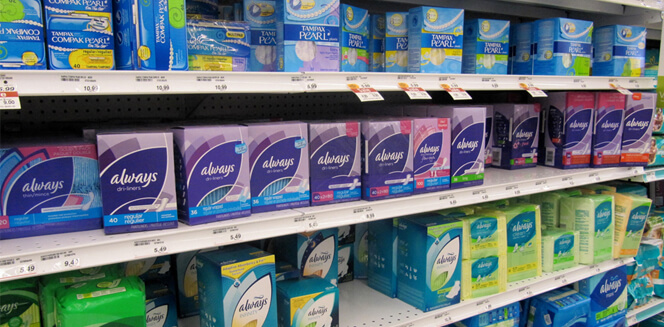Let Girls Learn - Inspiring Manufacturers in Feminine Hygiene Products Market

1 Apr
2016
U.S. first lady Michelle Obama, strikes social deficits associated with menstrual cycles in school going teens with her ‘Let Girls Learn’ initiative. Presiding over the event, conducted mid-April, 2016, she highlighted the problem of girls shying away from school during ‘those times of the month’. The taboo that tags along with this natural biological phenomenon is just one reason; access to feminine hygiene products in the market due to economic restraints, another. She remarked that contrary to popular notion, this problem is observed globally, among population that struggles with monthly provisions. In such cases, sanitary napkins somehow might be considered as a luxury.
Consequential to the focus of the event, investment funds from the World Bank would be channelized to provide free feminine hygiene products to schoolgirls. This would directly impact their academic performance and facilitate overall hygiene maintenance. Similar initiatives have already started taking shape in city schools at NYC. Pad and tampon dispensers have been installed at over 25 centers, already registering positive impact on attendance figures for girls. Such recent trends come as a reaction towards different financial taxes applied to such products in various states. Concerns raise on listing these products under basic healthcare, and introduce federal subsidies instead of piling on taxes to its prices.
History of Feminine Hygiene Products Market
Prevalent in ancient culture were materials such as papyrus, lint, and paper were used to restrict or absorb blood flow. During early 1800s, condoms and other intrusive devices were made from Goodyear’s vulcanized rubber that regarded female hygiene. The combinational arrangement to serve the same purpose developed over the years. By the twentieth century, women were using cotton pads made at home from clothes to spare. Additional pieces of clothing to prevent staining from uncontrolled flow also hit the markets.
Twentieth century was all about moving from strings and belts to adhesive sanitary napkins, tampons, and menstrual cups. More recently, slight variations to suit consumer choices have ruled the manufacturing of female care products. While the tampons and pads are fairly popular among global population, awareness regarding the use of menstrual cups remains low. Why does it need to rise? Well, environmental concerns seem to be the whole idea behind elimination of waste generated by used napkins.
Consumer and Consumption Pattern for Feminine Hygiene Products
As natural an occurrence as it is, avoiding care and proper conduct during the periods can lead to several side effects on overall well-being. Consumers around the world continue to use products that were introduced to them at a tender age. With almost no conversation and extensive education on the subject, nor a free-environment for the same, exposure to entire range of products gets limited. Manufacturers around the world present an array of feminine hygiene products in the market.
Reusable sea sponges can be cut as per consumer’s desire and reused multiple times with appropriate cleaning. Sanitary napkins are available in both synthetic and organic textures, that can be chosen as per individual preference. Menstrual cups form the latest trend in this range of products. Being made of medically-approved silicone, thermoplastic elastomer, and natural rubber these are environment friendly on disposal. Soft-cup diaphragms bare similar insertion devices but with chances of leakage. Consumers have the benefit of choice from among these, as per their daily activities, budget allowance, availability of product, and ease of use.
Structural Market for Feminine Hygiene Products
It is remarkably appalling how menstrual health seems to escape the critical concern from governmental policies. Awareness activities for menstrual health in female population shall help expand consumer base. Cutting down on taxes applicable to female care products will help engage customers over the period of the time. Global availability of entire portfolio from manufacturers must essentially reach out to the regional markets and its customers. E-commerce has been playing its role perfectly in the current scenario, in both creating consumer awareness and acting as active distribution channel.
Allied Market Research has recently published a report titled “World Feminine Hygiene Products Market - Opportunities and Forecasts, 2015 - 2022.” The report presents an analytical insight into the existing structure of global feminine hygiene products market. The key drivers and restraints have been highlighted to outline the opportunity segments of the industry. Major manufacturing companies have been profiled for their business imperatives, product portfolio, corporate strategies, and financial performance. The report conclusively points out profitable investment areas for new entrants and market stakeholders.

Akhilesh Prabhugaonkar
Author's Bio- Akhilesh Prabhugaonkar holds a bachelor’s degree in Electronics Engineering from the reputed Vishwakarma Institute of Technology. He has a special interest in the fields of forensics, world history, international relations and foreign policy, sports, agriculture, astronomy, security, and oceanography. An ardent bibliophile and melophile, Akhilesh loves to write on topics of his interest and various other societal issues. This love for writing made him enter the professional world of content writing and pursue his career in this direction.
Avenue: Entire Library membership of Allied Market Research Reports at your disposal
- Avenue is an innovative subscription-based online report database.
- Avail an online access to the entire library of syndicated reports on more than 2,000 niche industries and company profiles on more than 12,000 firms across 11 domains.
- A cost-effective model tailored for entrepreneurs, investors, and students & researchers at universities.
- Request customizations, suggest new reports, and avail analyst support as per your requirements.
- Get an access to the library of reports at any time from any device and anywhere.
Related Post
-
Why are Food Processing Businesses Increasingly Shifting Towards Halal Food Products?
-
Which Heat Sink Industry Trends Your Semiconductor Business Be Aware of?
-
Which Hydrogen Compressor Industry Trends are Profitable for Your Equipment Business?
-
Why is Investing in Advanced Technologies the Need of the Hour for Mining Metal Businesses?
-
How Has E-Commerce Helped Daily Products Manufacturing Companies Expand Their Business Globally?
-
How Advanced Dehumidifier Trends Transform Your Electronics Business?
-
Which Advanced Generator Trends Should Your Business Keep Track of?
-
Which Advanced Satellite Technologies have Transformed the Outlook of the Sector?
-
Cutting-Edge Truck Suspension Systems Redefining the Transportation Sector
-
How does NoSQL Revolutionize Future Businesses with Enhanced Capabilities?








